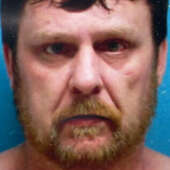No rest for the Saint Francis Level III Trauma Center
Sunday, May 29, 2022 ~ Updated 7:32 PM

Not pictured: Ronald Richmond, MD and Joseph McCadams, MD.
Airway. Breathing. Circulation.
Not the ABCs you learned in kindergarten, but rather the first step in assessing a critical patient after a traumatic accident. And the first step the team at the Saint Francis Level III Trauma Center took after two mass casualty accidents earlier this year.
Saint Francis Healthcare System's Emergency and Trauma Center is the only state-designated Level III Trauma Center in southeast Missouri. To earn and maintain a Level III Trauma Designation, Saint Francis must pass a rigorous, comprehensive quality assessment every five years.
"We are the only Trauma Center between Memphis and St. Louis," said Chad Garner, RN, BSN, CEN, Director of Emergency and Trauma Services. "When there is a trauma or mass casualty incident, we receive and treat patients here at Saint Francis." Garner shared that in 2021, the Emergency Department treated approximately 36,000 patients and 751 trauma cases.
To be a Level III Trauma Center, the Saint Francis Emergency Department must demonstrate the ability to provide 24-hour immediate coverage by emergency providers, prompt availability of general surgeons and anesthesiologists, transfer agreements for patients requiring more comprehensive care and continuing education for trauma center nurses and personnel.
As the only Trauma Center in the region, Garner said Saint Francis often operates at a higher level, which reflects the considerable experience of the trauma team. Garner has worked at Level I trauma centers, as have other staff members.
"We bring that experience and knowledge to Saint Francis, which helps us better serve communities across southeast Missouri," he said, adding the Emergency Department works well together. "Our highly experienced, in-house emergency specialists are trained in advanced cardiac life support, trauma resuscitation and pediatrics to support Saint Francis's providers around the clock."
Garner said the Saint Francis Level III Trauma Center has significant capabilities, with an intensive care unit staffed with intensivists and doctors specifically trained in internal medicine and critical care.
"When a trauma comes in," said Garner, "we activate the trauma team, which immediately brings the surgeon and one of our advanced practice providers to the trauma room to assess the patient."
Patients arrive by air or ground transportation and are cared for by a team of experts. Those that require specialty care -- like cardiac, orthopedic or neurologic care -- have access to the extensive network of Saint Francis specialists who are recognized experts in their fields.
In southeast Missouri, mass casualties do not happen often -- sometimes not even once a year. But in the first four months of 2022, there have already been two separate incidents where patients were transported to Saint Francis for emergency and trauma care. One incident involved the I-57 pileup, which left five dead and 15 injured, and a shooting in Charleston that resulted in two deaths and 16 injuries.
Garner said one blessing during the I-57 emergency was the time of day. The accident happened in the early morning of a weekday, and more staff were available to assist.
However, the shooting in Charleston happened at night.
Aaron Dodge, PA-C, Physician Assistant with Cape Trauma Specialists, a Saint Francis Medical Partner, was on shift that night when calls started coming in from Charleston. He was doing his regular rounds to see patients when the charge nurse in the Emergency Department called, saying several shooting victims were on the way.
"Fortunately," said Dodge, "we were able to pull a few ICU nurses to help. All the staff came together and did an excellent job. Even though we had this unprecedented influx of critical patients at a typically quiet time, our team did an outstanding job, and we were well equipped to take care of these patients. There is potential for it to get out of hand with these situations, but our team handled it appropriately."
Patients were triaged for both the I-57 accident and the Charleston shooting as they came through the door to determine the best place for them: the Emergency Department or the trauma room. During the I-57 pileup, minutes mattered, and decisions had to be made in seconds. An Lam Lawrence, MD, General Surgeon with Cape Girardeau Surgical Clinic, was ready to receive the patients.
"It is so important that the trauma surgeon in a mass casualty situation has the opportunity to quickly examine and assess the patients coming in," Lawrence said.
On the day of the interstate pileup, one of the team members was Kandra Voshage, PA-C, Physician Assistant with Cape Trauma Specialists. She worked with the trauma team to help stabilize patients, but her job does not stop there.
"We continue to keep track of our patients once they leave the trauma room," Voshage said. "We have patients in the Emergency Department, the ICU and the medical-surgical floor. Getting better and getting well is not an easy task for these patients. Once we get them stabilized and their injuries identified, we immediately start getting them better. We are trying to get them moving toward home."
It has already been a busy year for the trauma team at Saint Francis, but Garner says they cannot relax yet.
"Trauma season is right around the corner," Garner said. "From Memorial Day to Labor Day, we see an increase in trauma incidents. The weather is nicer, and people enjoy more time outside or travel for vacations."
But the Saint Francis team is prepared with the fast, critical thinking needed to prioritize a patient's care after a traumatic incident.
"We are focused on saving lives, treating injury, preventing life-threatening situations," said Voshage.
However, all the trauma team members believe their treatment of a patient goes beyond the physical.
"We approach patient care with a lot of compassion for what our patients have been through," said Voshage. "We try to help them walk through this situation from the time of their injury through to recovery."
"Patients are people with families, and all of these things are happening in real-time," added Lawrence. "If there were not a level of compassion and true care for the patient, we would not be doing it."





























